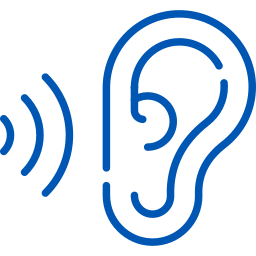IELTS
IELTS – one test, countless opportunities
The International English Language Testing System (IELTS) is a standardized test designed to assess the language ability of candidates who need to study or work where English is the language of communication. It is widely recognized and accepted by universities, employers, immigration authorities, and professional bodies around the world.

Listening
This section assesses your ability to understand spoken English. It consists of four recorded monologues and conversations.

Reading
This section evaluates your reading comprehension skills. It includes three long texts extracted from books, journals, magazines, and newspapers.

Writing
This section tests your ability to present ideas clearly. Task 1 requires describing visual data, while Task 2 involves writing an essay on a given topic.

Speaking
This section evaluates spoken English through a face-to-face interview with an examiner, consisting of an introduction, a speech on a topic, and a related discussion.
The main difference between UKVI (UK Visa and Immigration) IELTS and standard IELTS is that UKVI IELTS is specifically designed to meet the requirements for UK visa and immigration purposes. The content and format of the test are the same, but the test results are processed and delivered in a way that meets the specific requirements of UK visa and immigration applications.
Candidates typically take the IELTS exam for various reasons
Many universities and educational institutions require IELTS scores as part of their admissions process for international students.
ome professional organizations and licensing bodies require IELTS scores as proof of English proficiency for certain professions.
Employers in English-speaking countries may require IELTS scores from international applicants to ensure they have the necessary language skills for the job.
The duration of an IELTS preparation course varies based on factors like the candidate’s proficiency, course intensity, and focus areas. Courses can last from a few weeks to several months, with most candidates advised to prepare for several weeks to cover all test sections effectively.
9
Expert user
Fully operational command of the language: appropriate, accurate, and fluent with complete understanding
8
Very good user
Very good command of the language: appropriate, accurate, and fluent with only occasional inaccuracies.
7
Good user
Generally accurate and fluent, with occasional errors and misunderstandings.
6
Competent user
Effective and fluent, but with frequent errors and misunderstandings.
5
Modest user
Basic communication, but frequent issues in understanding and expression
4
Limited user
Basic communication in familiar situations, but frequent breakdowns.
3
Highly limited user
Very limited command of the language: great difficulty understanding spoken and written English.
2
Intermittent user
Essentially no ability to use the language beyond a few isolated words.
1
Non user
No ability to use the language except for a few isolated words.
